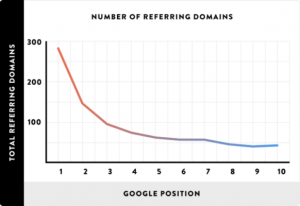 Employee engagement is one of the top challenges facing organizations today. In fact, 87 percent of organizations cited employee engagement as a top concern, according to a recent report from Deloitte.
Employee engagement is one of the top challenges facing organizations today. In fact, 87 percent of organizations cited employee engagement as a top concern, according to a recent report from Deloitte.
There may be many reasons why this is suddenly, and increasingly a concern for leaders over the past several years. And while behaviors like micromanagement, poor pay or benefits, or a lack of appreciation or praise are often cited, they don’t paint an accurate picture of the entire engagement story.
In addition to those internal behaviors that stifle engagement, there are also external factors that must be considered in order to better understand how you, as a leader, can keep your employees engaged.
Your employees are thinking beyond their cubicle. Employees can no longer be expected to stay with your company forever. The way Millennials view money and career has changed the game for a lot of businesses hoping to attract and keep their talent. These days, businesses should treat their employees like customers; continually working to win their loyalty.
Benefits aren’t enough. The problem with organizations focusing on office perks, benefits, and competitive pay alone is that they are all external motivators. None of them directly address the more important intrinsic values that must exist in order to keep your best employees happy, engaged, and more productive.
So, with these considerations in mind, how do you create an organizational culture that fosters engagement and motivates employees to stick around?
It comes down to one critical concept: Giving them ownership over the outcome.
How Do You Give Employees A Sense Of Ownership?
The rise of the intrapreneur – employees with an entrepreneurial mindset within their company – indicates a change in the way employees feel rewarded by their work. It’s no longer enough to simply pay them a fair wage. Today’s workforce is more motivated by their ability to make a tangible difference.
Instilling a sense of ownership in your team empowers them to use their own creativity, find innovative solutions to company problems, and gives them a stake in the success or failure of your organization.
Your ability to give employees a sense of ownership is influenced by the following three factors:
Trust
Trust is arguably the most important factor in any healthy relationship, including the relationship between employees and leaders. If either side does not trust the other, performance suffers.
Unfortunately, trust is often taken for granted by today’s leaders. A recent study from Interaction Associates found that while employees say trust is critical to their effectiveness, more than half of them don’t trust their boss or senior leadership teams. The same report found that only one third of workers say they feel safe communicating with leaders, indicating a lack of trust in employees as well.
A lack of trust stifles any chance of employee empowerment, creativity, and innovation. But organizations where trust thrives have seen countless benefits. In fact, according to Gallup, organizations with above-average levels of employee engagement reap 147 percent higher earnings per share.
Transparency
Transparency goes hand-in-hand with trust, and may be used as a way to create an environment of trust in organizations. Buffer is often heralded as an organization with a working model for transparency, though companies should tread carefully before they embrace it fully.
A recent study highlighted in Harvard Business Review found that a lack of privacy in the workplace could lead to problematic behavior. “Even when everyone involved had only the best of intentions, being observed distorted behavior instead of improving it.”
When done through a lens of trust, transparency can indeed lead to positive results. Employees want to stay informed of their company’s vision, values, and strategic objectives; they just don’t want to be micromanaged.
Purpose
By giving your employees a sense of ownership, you instill in them a sense of purpose. They begin to feel that their work is part of a larger story; that they are contributing to something bigger than themselves.
Many years of research has shown that instilling a task with purpose motivates high performance. It taps into the intrinsic motivators that keep employees happy and engaged in the work they do on a daily basis.
To achieve this, organizations must keep their vision, mission, and values at the forefront of everything they do. They must open the lines of communication and welcome feedback from employees at all levels. They must foster an environment of trust in their team, and provide a safe environment for employees’ voices to be heard.
With these three things in place, your employees will begin to feel ownership over the outcome of their work. They’ll feel connected to your company’s purpose and your organization will ultimately become more healthy, innovative, and sustainable as a result.
This article originally appeared on gothamCulture
(191)







